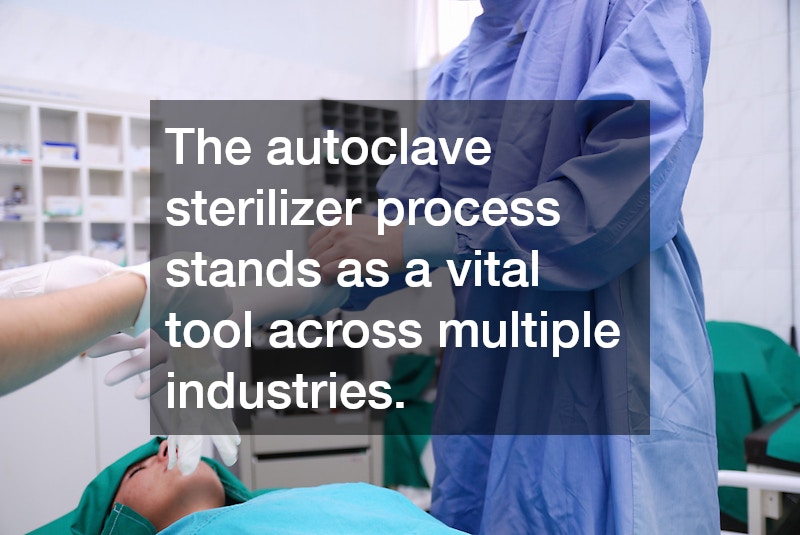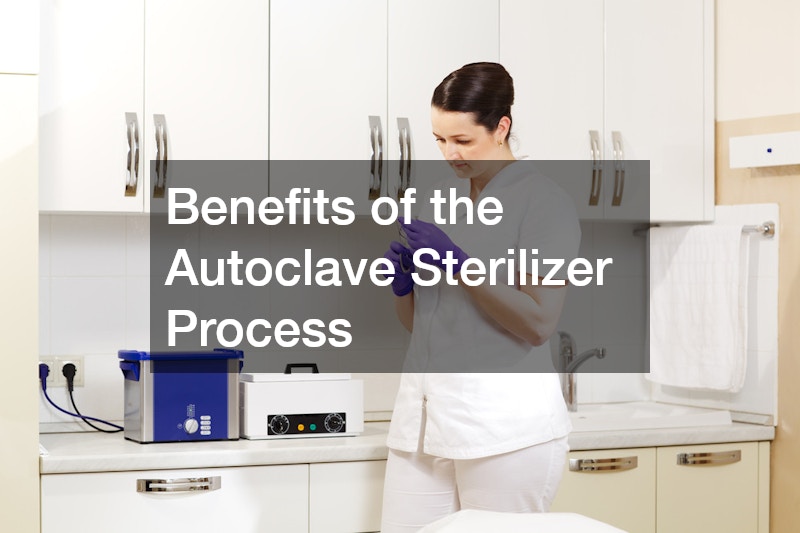The autoclave sterilizer process is a cornerstone of modern sterilization techniques, paramount in sectors such as healthcare, dentistry, and laboratory settings. Its significance cannot be overstated, as it ensures sterility that is crucial for maintaining safety and hygiene standards. By leveraging the power of steam and pressure, the autoclave provides a dependable method for eliminating microbial life, making it indispensable in various applications.
What Makes Autoclaves Essential in Sterilization?
Efficiency and Effectiveness
Autoclaves are celebrated for their unmatched efficiency and effectiveness in destroying all forms of microbial life, including the most resistant viruses and spores. This capability is particularly crucial in environments where sterility is non-negotiable, such as operating theaters and research labs. By ensuring that even the most resilient microbes are eradicated, autoclaves maintain the integrity of tools and materials used in sensitive procedures.
The consistent results provided by autoclave sterilization come from its use of pressurized steam, which permeates materials thoroughly. This method ensures that hard-to-reach areas of equipment are sterilized without leaving residues, contrasting with chemical sterilization methods that may not reach all surfaces. As evidence of its efficacy, autoclave sterilization is a standard method for preparing medical and laboratory equipment worldwide.
User-Friendly Operation
Compared to other sterilization techniques, autoclaves are remarkably user-friendly, reducing the learning curve for users. Operators can easily load materials, select the appropriate settings, and monitor the process without needing extensive training. This simplicity not only enhances efficiency but also reduces potential errors stemming from improper use.
The straightforward interface of modern autoclaves facilitates minimal handling and risk exposure to contaminants, ensuring a safer work environment for users. Unlike chemical sterilization, which varies in complexity, autoclaves require routine maintenance but minimal intervention during operation. An emerging trend is the development of smaller and more compact autoclaves that can be utilized even in space-limited environments like dental offices.
Cost-Effectiveness
One of the compelling advantages of autoclaves is their cost-effectiveness, especially when evaluated over the long term. The initial investment in an autoclave can be offset by reduced reliance on disposable materials and chemical sterilants. By facilitating the repeated use of sterilized instruments, facilities can significantly lower operational costs.
Additionally, chemical sterilization not only involves the purchase of sterilants but also the management of chemical waste, which is costly and environmentally detrimental. In contrast, autoclaves use water and electricity, which are less expensive and result in a smaller ecological footprint. This economic advantage is particularly beneficial for budget-sensitive organizations like small clinics and research laboratories.
How Does the Autoclave Sterilization Process Work?
Understanding the Technology
The underlying technology of autoclaves revolves around the use of steam under pressure, a method proven to penetrate and sterilize diverse materials. This process raises the temperature within the chamber above that of boiling water, allowing it to reach temperatures lethal to all microorganisms. The combination of heat, moisture, and pressure ensures thorough sterilization, unparalleled by dry heat methods.
As the steam permeates the materials within the autoclave, it condenses, releasing heat that effectively kills bacteria, spores, and viruses. This condensation phase allows high levels of latent heat transfer, crucial for achieving comprehensive sterilization. Operators benefit from understanding this process, as it highlights why tightly wrapping items can impede steam penetration.
Steps of the Autoclave Cycle
The autoclave cycle consists of several distinct stages, each crucial for successful sterilization. Initially, the pre-conditioning phase removes air from the chamber, either via a vacuum or displacement, setting the stage for optimal steam penetration. This phase is followed by the exposure stage, where steam floods the chamber and maintains the target temperature and pressure for a prescribed duration.
During the exposure phase, the steam-holding time is critical for ensuring that all microbial life is eradicated, necessitating precise control over environmental conditions within the chamber. The final stage, known as the exhaust phase, involves the removal of steam, allowing the chamber to depressurize safely. This stage may include a drying cycle, particularly essential for wrapped materials, to avoid moisture-related compromises in sterility.
The autoclave sterilizer process stands as a vital tool across multiple industries, underscored by its exceptional efficiency, ease of use, and cost-effectiveness. It is unmatched in its ability to ensure sterility, effectively supporting health and safety standards essential for operations in healthcare, laboratories, and beyond. As technology advances, the role of autoclaves in ensuring hygiene and safety will undoubtedly continue to grow, confirming their status as an indispensable asset in the field of sterilization.
.



